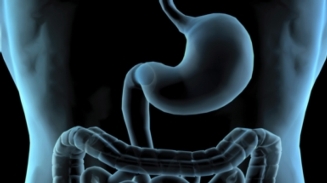
更准确的肠道微生物“人口普查”
Better Gut Microbiome Census through Computing
更准确的肠道微生物“人口普查”
Sophisticated computational techniques make it possible to analyze gene samples from all the bacteria in the gut at once to take a census of the species present.
得益于巧妙的计算技术,研究人员能够对肠道微生物样本进行“第一手”的基因分析,以考察微生物的种群状况。
撰文/播音 辛西娅·格雷伯
翻译 Meatle
审校 乔虹
In recent years scientists have shown that the microbes that live in our guts play crucial roles in our lives. They’re involved in digestion, obesity, even mood. And a few can cause serious illness. So it would be a good idea to know the identities of the bacteria inside us. And yet, that info has been incomplete.
近年来,科学家向我们展现了肠道微生物在我们的生活中起到的重要作用。它们影响着我们的消化、肥胖、甚至是情绪。而且他们之中只有少数会引起严重的疾病。因此,识别出我们肚子里的微生物种类相当有意义。不过至今为止,这些信息仍然未完备。
But now researchers have developed a technique to get a better census of the gut microbiome. And using the new system, the researchers have found that our microorganisms are even more diverse than we knew. The report is in the journal Nature Biotechnology. [Volodymyr Kuleshov et al,Synthetic long-read sequencing reveals intraspecies diversity in the human microbiome]
但现在研究人员已经开发出一种对肠道微生物进行更准确“人口普查”的计算技术。而使用这种新系统,研究人员发现肠道中的微生物比我们所知的更为多样。这项发现发表在《自然-生物技术》(Nature Biotechnology)期刊上。 [Volodymyr Kuleshov et al,Synthetic long-read sequencing reveals intraspecies diversity in the human microbiome]
Currently, researchers analyze microbial diversity by taking a sample they hope includes the different kinds of bacteria in the gut. They then try to identify the different species by looking at their genomes. But they can only do that second-hand, by trying to piece together many short snippets of DNA—which can be confusing and inadequate when dealing with numerous different kinds of bacteria.
此前,研究人员分析微生物多样性的方式是采集那些他们希望会含有多种肠道微生物的样本,然后尝试通过分析基因序列来识别出样本所含有的微生物的种类。但他们不能分析到“第一手”的样本,他们只能把微生物的基因粉碎成短小的片段,然后尝试拼接起来,继而进行分析。这种方法处理不适合于处理具有微生物种类极其多样的样本,容易产生混淆。
So geneticists at Stanford University got together with computer scientists to come up with a new approach. They used sophisticated computational techniques that enabled them to analyze much longer stretches of DNA—which included many genes that would be missed with the older system. For example, when they tested the gut microbiome from a healthy human male the old way, they found 127 different species. The new method applied to the same sample revealed the presence of an additional 51 species.
因此,斯坦福大学的基因学者与计算机科学家合作,提出了一种新的方法。他们使用一种精密的计算机技术分析更长的DNA序列。这些序列中包含了旧系统中可能会忽略掉的一些基因。比如说,他们分析一个健康男性的肠道微生物样本时,旧方法可以测出127种不同的微生物,而新方法可以识别出额外的51种。
The new approach could be particularly important for identifying and understanding disease-causing microbes. "When you assemble the whole genome, you have a really good idea of what pathogenic genes are present.” Michael Snyder, one of the study researchers. “So we think this technology is going to be extremely powerful for understanding the genetic basis of pathogenesis.”
新方法对于识别与了解致病微生物至关重要。“当你采集到所有的基因时,你能更好的识别出病原体的基因。”其中一位研究员,迈克尔·斯奈德(Michael Snyder)说,“对于从基因层面上认识致病机理,这种技术将是及其有效的方法。”
For example, we all harbor benign strains of E. coli bacteria. But other strains can be toxic or even deadly—and they might be hard to investigate because they don’t grow easily in the lab. The new approach could look directly at the toxic strain’s genes to see how they functions. “And of course this will be really powerful then for treating humans in terms of what pathogenic genes might be present in the microorganisms they harbor.”
比方说,我们体内均栖息着良性的大肠杆菌。然而,其他的菌株可能是有毒甚至致命的。然而,我们难以研究这些恶性菌株,因为在实验室环境下并不容易培育他们。这种新方法则可以直接地分析有毒菌株的基因,考察这些基因如何起效。“而对于感染了有毒菌株的人群的治疗来说,这无疑是强力的工具。”
未经书面许可任何人不得复制或镜像
京ICP备11000850号-1
 京公网安备11010502039775号
京公网安备11010502039775号 信息网络传播视听节目许可证0111611号
国家科技基础条件平台

















